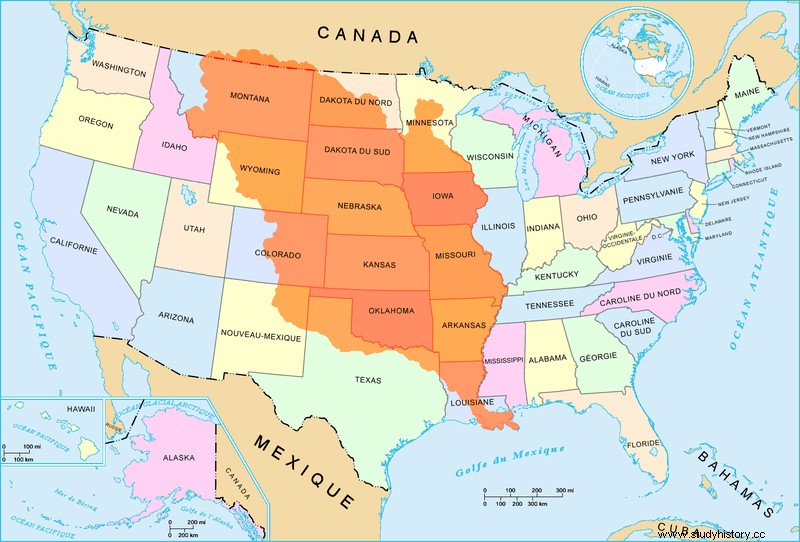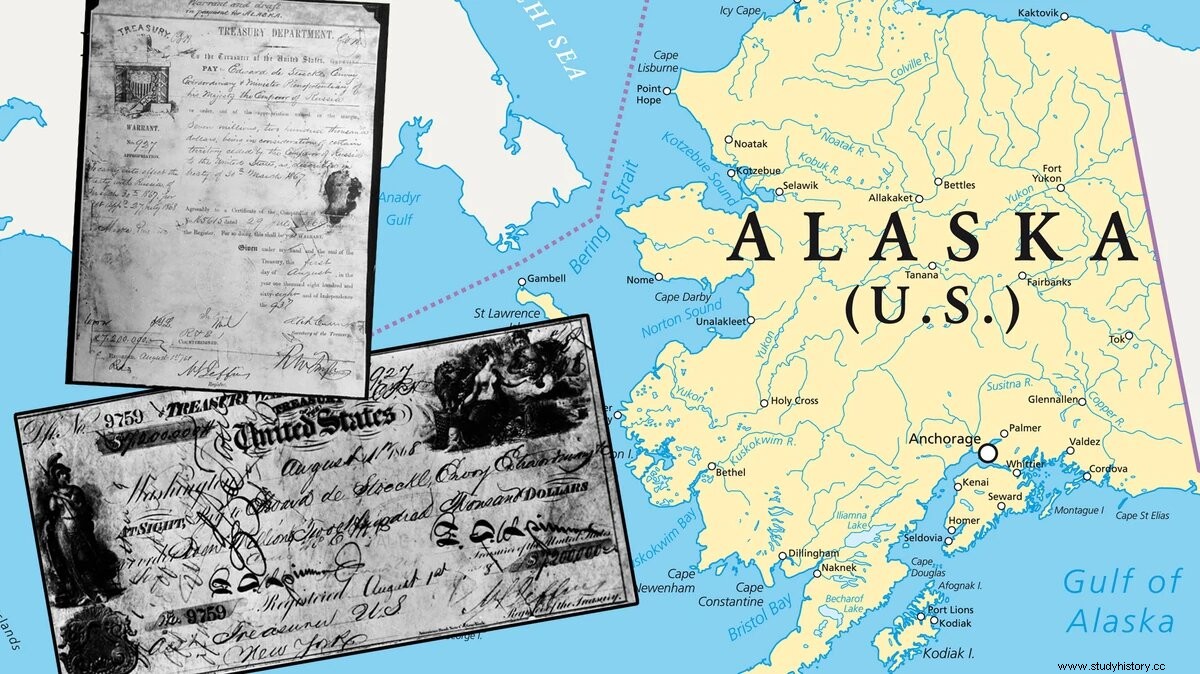These days, the Saudi oil company Aramco has been in the news, since it has starred in the largest IPO in history, has raised 23,300 million euros in the largest IPO in history and has become the company with the highest stock market value in the world , with just over 1.5 billion euros. Being some dizzying figures, which they are, in my modest opinion I think that the businesses that the United States did with the purchase of Louisiana and Alaska in the 19th century were even more profitable.
Regarding Louisiana , the purchase was signed and sealed in 1803 by the United States and Napoleon Bonaparte for 15 million dollars of the time (about 240 million today). Coincidentally, and thanks to this French bargain, it can be said that the United States is now what it is, since the newly acquired territory allowed them to develop first as a great agricultural and ranching nation, and later to extend towards the Pacific Ocean conquering the mythical and far West. To illustrate a bit the magnitude of American good luck, let's review some data. The territory of Louisiana covered an area of 2,200,000 km², almost 4 times the Iberian Peninsula, an immense plain of thousands of acres of fertile land, full of large pastures, suitable for agriculture and livestock, and crossed from north to south The Mississippi River rises on the Canadian border and empties into the Gulf of Mexico near New Orleans. If we take into account its two great tributaries, the Missouri and the Ohio, its basin is one of the largest and largest in the world, and, from pre-Columbian times to the present day, an essential communication route and a fundamental means of transportation. of merchandise. All these characteristics made it the heart of the future United States.

Spanish Louisiana in 1803
The French defeat in the Seven Years' War ended with the Treaty of Paris (1763), which forced France to cede the eastern part of the Viceroyalty of New France to the English (Canada and the territories east of the Mississippi River, except New Orleans), and the western part of the viceroyalty to Spain (Spanish Louisiana), in this case as compensation for the loss of Florida that remained in the hands of the English. Napoleonic France regained sovereignty over Spanish Louisiana in the secret Treaty of San Ildefonso in 1800 and, forgetting the commitment that in case of sale Spain would have the preferential right of acquisition, Napoleon sold it to the Americans. With great foresight, the American president at the time, Thomas Jefferson, sent his emissaries to negotiate with Napoleon who, of course, already knew that it was foolish to hold on to a huge sparsely populated territory that he could not defend and, strategically, preferred to sell it to him. a friendly country to fall into the hands of England. Jefferson's messengers had to sound out the situation, and they appear before the French First Consul with the proposal to buy only New Orleans. Surprisingly, what they received was a counter offer to take all of French Louisiana for $18 million. Although the US representatives were not empowered to make such a decision, they had the fortitude and courage to accept because, obviously, they knew that such a bargain only comes around once in a lifetime. With the corresponding haggling and drinks, the price was set at $15 million. Although it was a bargain, Jefferson had to defend the decision of his negotiators against the opposition that refused to approve such a disbursement. The opponents lacked the vision of the president and the negotiators:they doubled their territory and did so without shedding a drop of blood.

And how much was paid for Alaska ? On March 30, 1867, the United States government paid 7.2 million dollars (about 100 million today) to the imperial government of Russia for the territory of Alaska, a desolate immensity that did not seem to have much economic use, and that today is the largest state in the country. And if Jefferson had to defend the purchase of Louisiana, the benefit of which was more than evident, what about what President Andrew Johnson had to do to defend the purchase of that inhospitable territory of 1.5 million km² -the media came to post:"Why does America need that ice chest and 50,000 wild Eskimos drinking fish oil for breakfast? «-. Specifically, to his Secretary of State, William Seward , the character behind that business.
Two decades had not passed since the purchase when the gold rush broke out in Alaska, and in the middle of the 20th century, the oil companies found enormous deposits in the north, which have been intensively exploited ever since. Alaska is much more than just land, it is a huge deposit of natural resources and an important strategic enclave. So why did the Russians sell it? Well, for economic and strategic reasons.
By decision of Tsar Paul I, since 1799 the Russo-American Company had a commercial monopoly over all Russian possessions in America, including Alaska. Under the direction of businessman Aleksander Baranov , the company established settlements, built forts, and organized a flourishing maritime trade based on coal and ice mined in Alaska and, above all, on walrus ivory and furs that they bartered with the natives. When in 1818 Aleksander left the management due to his advanced age, everything changed:first it was the military who took charge of the company and, later, to finish off the job, directly government officials who bureaucratized the management and increased the "expenses of staff". Neither of them proved to be very savvy in business and what was a hugely profitable enterprise became a liability. In honor of the truth, excessive hunting also had an influence, which almost exterminated the walrus and otter populations, achieving a drastic reduction in ivory and skins for trade. And as icing on the cake, the Crimean War of the 1950s, in which Russia faced England, France and the Ottoman Empire, which paralyzed maritime trade.
As happened to Napoleon, before Alaska fell into the hands of England, his enemy and the great power of the time, Tsar Alexander II preferred to sell it to the United States, with whom he had cordial relations… at that time. So Russia sent Baron Eduard de Stoeckl to Washington to open negotiations with US Secretary of State William Seward.
